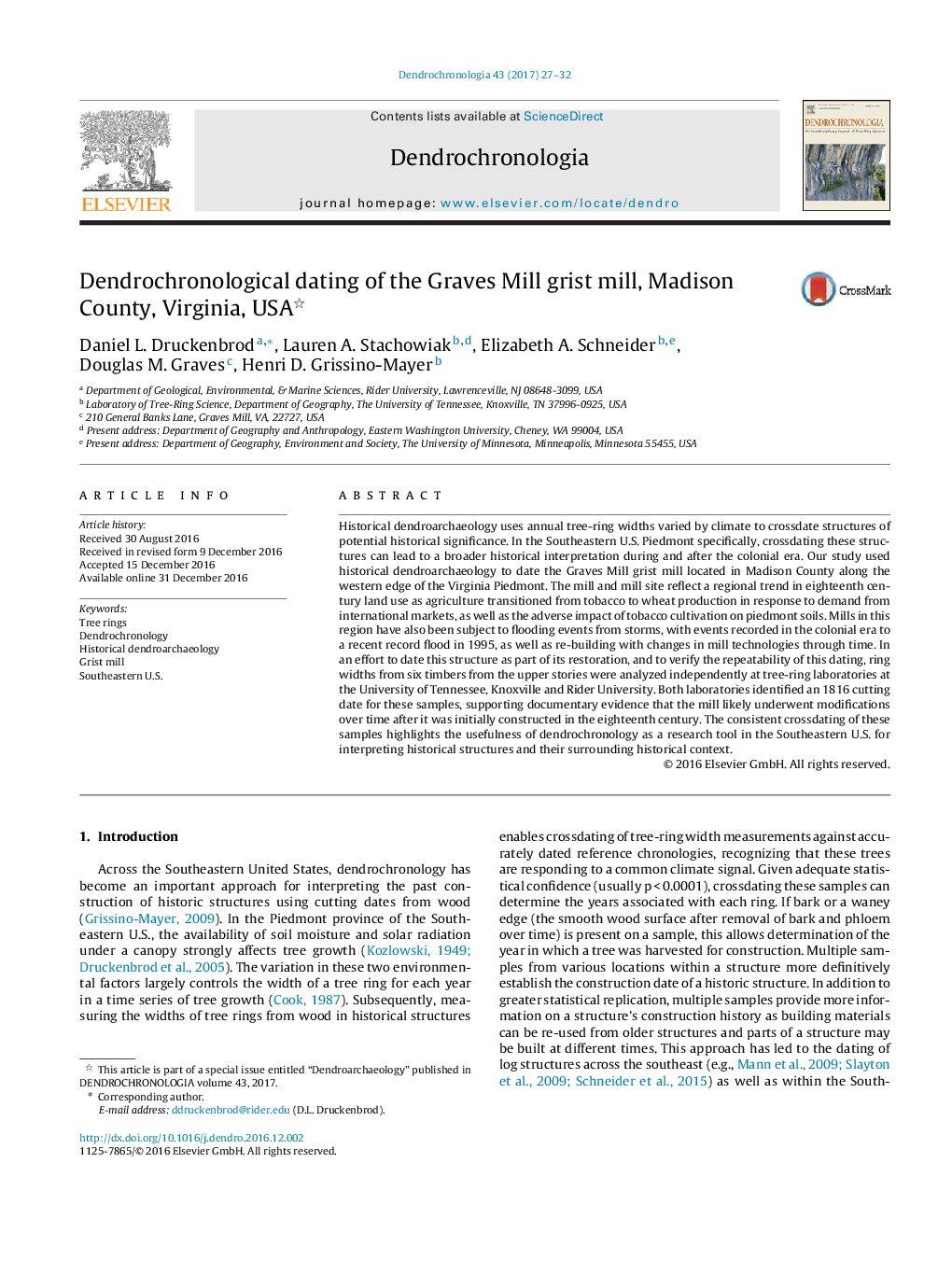| Article ID | Journal | Published Year | Pages | File Type |
|---|---|---|---|---|
| 4759272 | Dendrochronologia | 2017 | 6 Pages |
Historical dendroarchaeology uses annual tree-ring widths varied by climate to crossdate structures of potential historical significance. In the Southeastern U.S. Piedmont specifically, crossdating these structures can lead to a broader historical interpretation during and after the colonial era. Our study used historical dendroarchaeology to date the Graves Mill grist mill located in Madison County along the western edge of the Virginia Piedmont. The mill and mill site reflect a regional trend in eighteenth century land use as agriculture transitioned from tobacco to wheat production in response to demand from international markets, as well as the adverse impact of tobacco cultivation on piedmont soils. Mills in this region have also been subject to flooding events from storms, with events recorded in the colonial era to a recent record flood in 1995, as well as re-building with changes in mill technologies through time. In an effort to date this structure as part of its restoration, and to verify the repeatability of this dating, ring widths from six timbers from the upper stories were analyzed independently at tree-ring laboratories at the University of Tennessee, Knoxville and Rider University. Both laboratories identified an 1816 cutting date for these samples, supporting documentary evidence that the mill likely underwent modifications over time after it was initially constructed in the eighteenth century. The consistent crossdating of these samples highlights the usefulness of dendrochronology as a research tool in the Southeastern U.S. for interpreting historical structures and their surrounding historical context.
